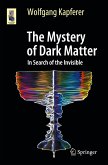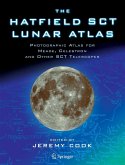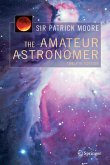Many excellent books have been written about the past history of the universe and of the various objects-galaxies, stars, planets- to be found in it. All the exciting events from the original Big Bang to the appearance of human beings have been carefully recorded. Much less has been written about what comes next. What will happen to all these galaxies, stars, and planets in the future? And what will happen to us, and to any other intelligent life in the u- verse? It is obviously more dif?cult to examine the future than the past, but there are ways of doing it. Not everything in the universe is the same age; so a study of the older objects gives us some idea of what will happen to the younger objects. Some things vary in a fairly regular way, so you can guess what will happen next. For example, the number of spots visible on the Sun's surface increases and then decreases again every eleven years on average. These ups and downs can be expected to continue for a considerable time inthe future. Finally, theoretical explanations of how things work at present often give some hint of how they will develop in the future. One rule-of-thumb in astronomy-though there are plenty of exceptions-is that the further away objects are, the less we know about them. This means that it is often more dif?cult to forecast the future for distant objects than for ones nearby.
From the reviews:
"A. J. Meadow's Future of the Universe tracks not only the plan of the cosmos as a whole, but a host of futures. ... Overall ... I can easily recommend this book. It's not only about the future - it's a good primer on just about everything." (Rebecca Johnson, Sky & Telescope, August, 2007)
"The book reads easily and the language is simple. ... the reader is left not only with a good clear picture of the past, present, and future of the relevant subject but also looking forward to the next instalment. ... a satisfying and thought-provoking review of current cosmology, informative for the layman and capable by its brevity of inspiring some degree of lateral thinking for the serious astronomer. It has nine colour plates, an index, and advice for further reading, and I recommend it unreservedly." (Colin Cooke, The Observatory, Vol. 127 (1200), October, 2007)
"The future of everything, from the Earth to the entire Universe. ... this book covers a huge range of speculations about the future of our Universe and its contents - particularly the Earth - in one volume. That, in itself, makes the Future Of The Universe a notable work. Dealing with the long-term fate of the Universe, this work deals with scenarios, such as the Big Rip, in which runaway expansion tears creation to shreds. These sections are well written ... . A fascinating book. " (Marcus Chown, BBC Sky at Night, May, 2007)
"This book is a popular text about the future of the Universe. Its author was of astronomy and history of science, and so he is able to present very carefully chosen questions, where one is able to give realistic answers ... . it also serves as very well founded source of knowledge about the present state of the solar system: the development of the sun and the planets, their magnetic fields, the conditions for a possible development of life at other planets etc." (Hans-Jürgen Schmidt, Zentralblatt MATH, Vol. 1106(8), 2007)
"In this welcome addition to the 'Astronomer's Universe' series, Meadows, retired professor of astronomy and the history of science (Loughborough Univ., UK), offers a well-documented book taking readers on a fascinating journey through space and time, with time and distance measured on a scale of millions, billions, and trillions. ... Nine color plates depict dramatic images; bibliographic sources are arranged by chapter to better facilitate readers seeking additional information on topics of interest. Summing Up: Recommended. General reader; lower-division undergraduates through professionals." (R. C. Jackman, CHOICE, Vol. 44 (11), August, 2007)
"A. J. Meadow's Future of the Universe tracks not only the plan of the cosmos as a whole, but a host of futures. ... Overall ... I can easily recommend this book. It's not only about the future - it's a good primer on just about everything." (Rebecca Johnson, Sky & Telescope, August, 2007)
"The book reads easily and the language is simple. ... the reader is left not only with a good clear picture of the past, present, and future of the relevant subject but also looking forward to the next instalment. ... a satisfying and thought-provoking review of current cosmology, informative for the layman and capable by its brevity of inspiring some degree of lateral thinking for the serious astronomer. It has nine colour plates, an index, and advice for further reading, and I recommend it unreservedly." (Colin Cooke, The Observatory, Vol. 127 (1200), October, 2007)
"The future of everything, from the Earth to the entire Universe. ... this book covers a huge range of speculations about the future of our Universe and its contents - particularly the Earth - in one volume. That, in itself, makes the Future Of The Universe a notable work. Dealing with the long-term fate of the Universe, this work deals with scenarios, such as the Big Rip, in which runaway expansion tears creation to shreds. These sections are well written ... . A fascinating book. " (Marcus Chown, BBC Sky at Night, May, 2007)
"This book is a popular text about the future of the Universe. Its author was of astronomy and history of science, and so he is able to present very carefully chosen questions, where one is able to give realistic answers ... . it also serves as very well founded source of knowledge about the present state of the solar system: the development of the sun and the planets, their magnetic fields, the conditions for a possible development of life at other planets etc." (Hans-Jürgen Schmidt, Zentralblatt MATH, Vol. 1106(8), 2007)
"In this welcome addition to the 'Astronomer's Universe' series, Meadows, retired professor of astronomy and the history of science (Loughborough Univ., UK), offers a well-documented book taking readers on a fascinating journey through space and time, with time and distance measured on a scale of millions, billions, and trillions. ... Nine color plates depict dramatic images; bibliographic sources are arranged by chapter to better facilitate readers seeking additional information on topics of interest. Summing Up: Recommended. General reader; lower-division undergraduates through professionals." (R. C. Jackman, CHOICE, Vol. 44 (11), August, 2007)








